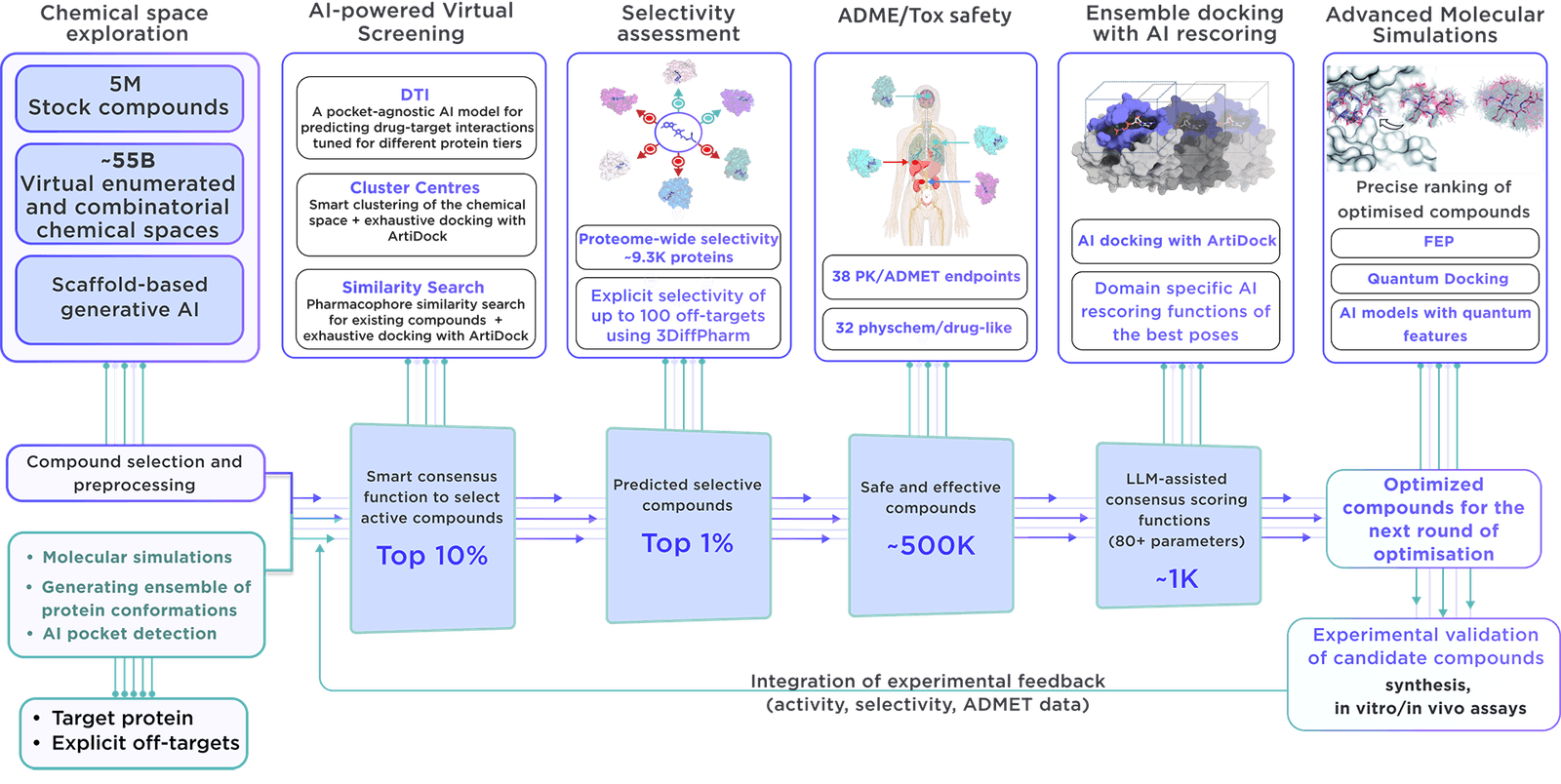Focused On-demand Libraries - Receptor.AI Collaboration
Explore the Potential with AI-Driven Innovation
This extensive focused library is tailor-made using the latest virtual screening and parameter assessment technology, operated by the Receptor.AI drug discovery platform. This technique is more effective than traditional methods, offering compounds with improved activity, selectivity, and safety.
From a virtual chemical space containing more than 60 billion molecules, we precisely choose certain compounds. Reaxense aids in their synthesis and provision.
Contained in the library are leading modulators, each labelled with 38 ADME-Tox and 32 physicochemical and drug-likeness qualities. In addition, each compound is illustrated with its optimal docking poses, affinity scores, and activity scores, giving a complete picture.
We utilise our cutting-edge, exclusive workflow to develop focused libraries.
Our strategy employs molecular simulations to explore an extensive range of proteins, capturing their dynamics both individually and within complexes with other proteins. Through ensemble virtual screening, we address proteins' conformational mobility, uncovering key binding sites at both functional regions and remote allosteric locations. This comprehensive investigation ensures a thorough assessment of all potential mechanisms of action, with the goal of discovering innovative therapeutic targets and lead molecules across across diverse biological functions.
Our library is unique due to several crucial aspects:
- Receptor.AI compiles all relevant data on the target protein, such as past experimental results, literature findings, known ligands, and structural data, thereby enhancing the likelihood of focusing on the most significant compounds.
- By utilizing advanced molecular simulations, the platform is adept at locating potential binding sites, rendering the compounds in the focused library well-suited for unearthing allosteric inhibitors and binders for hidden pockets.
- The platform is supported by more than 50 highly specialized AI models, all of which have been rigorously tested and validated in diverse drug discovery and research programs. Its design emphasizes efficiency, reliability, and accuracy, crucial for producing focused libraries.
- Receptor.AI extends beyond just creating focused libraries; it offers a complete spectrum of services and solutions during the preclinical drug discovery phase, with a success-dependent pricing strategy that reduces risk and fosters shared success in the project.
Receptor.AI
O75663
UPID:
TIPRL_HUMAN
ALTERNATIVE NAMES:
Putative MAPK-activating protein PM10; Type 2A-interacting protein
ALTERNATIVE UPACC:
O75663; B2R8V3; Q5HYB2; Q8IZ86

